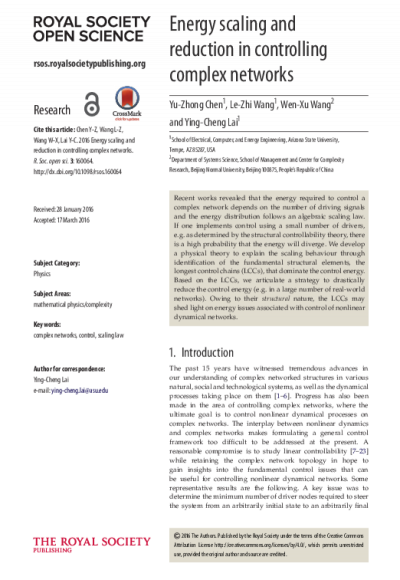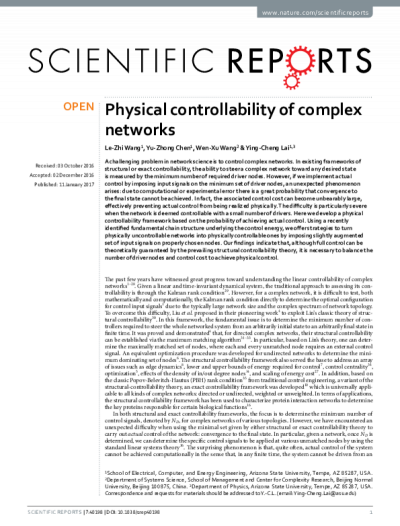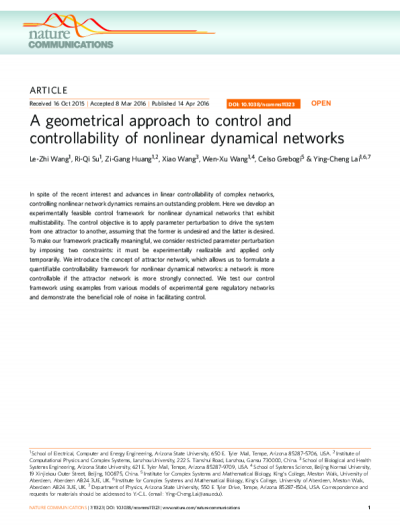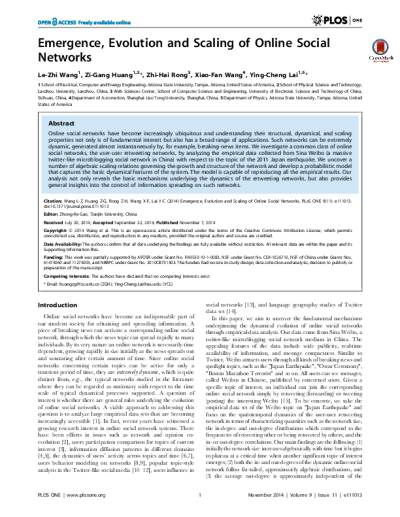Energy Scaling and Reduction in Controlling Complex Networks

Recent works revealed that the energy required to control a complex network depends on the number of driving signals and the energy distribution follows an algebraic scaling law. If one implements control using a small number of drivers, e.g. as determined by the structural controllability theory, there is a high probability that the energy will diverge. We develop a physical theory to explain the scaling behaviour through identification of the fundamental structural elements, the longest control chains (LCCs), that dominate the control energy. Based on the LCCs, we articulate a strategy to drastically reduce the control energy (e.g. in a large number of real-world networks). Owing to their structural nature, the LCCs may shed light on energy issues associated with control of nonlinear dynamical networks.
- Author (aut): Chen, Yu-Zhong
- Author (aut): Wang, Le-Zhi
- Author (aut): Wang, Wen-Xu
- Author (aut): Lai, Ying-Cheng
- Contributor (ctb): Ira A. Fulton Schools of Engineering


